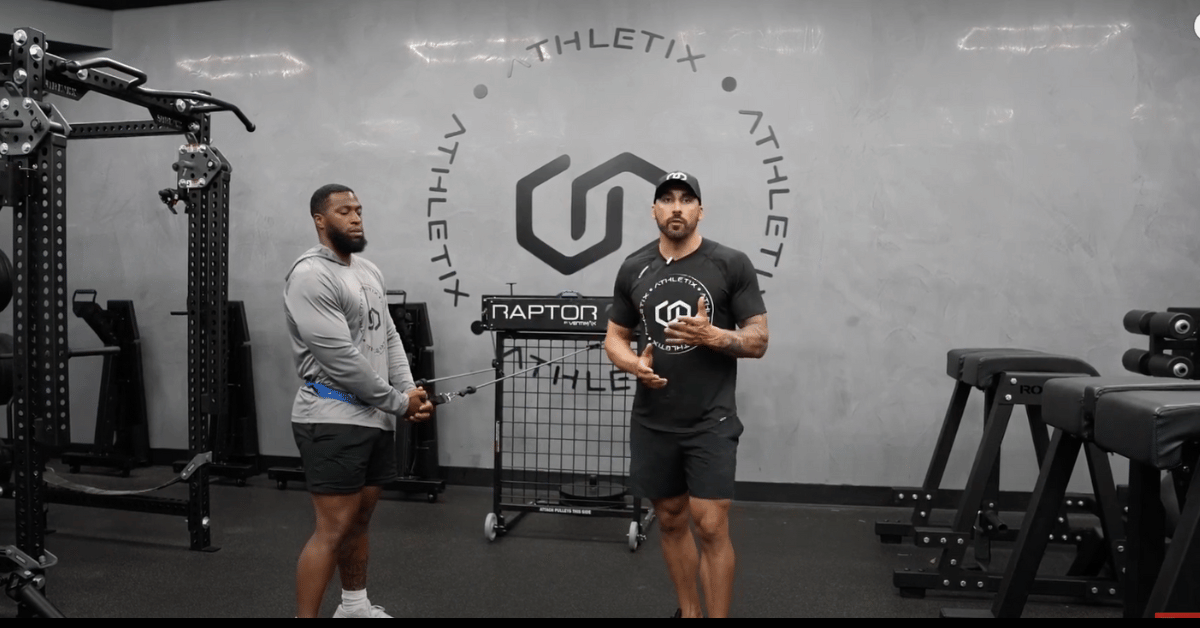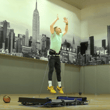Every athlete knows what being injured is like: not fun. Making a solid rebound can be the difference between a great season and a few months on the sidelines. While young athletes often lack the patience to see a recovery through, doing so is essential for success in any sport. That’s where VertiMax comes in. VertiMax is the number one aid for quick physical therapy recovery and injury prevention.
Professional athletes, such as Maria Sharapova, rely on VertiMax to build strength and stability in key areas for injury prevention purposes. Athletes seeking a fast recovery can use these same exercises. Part of the reason is VertiMax’s ability to isolate certain muscle groups.
Dr Sharif Tabbah, commonly known as “Dr Reef”, is a Doctor of Physical Therapy, a Certified Strength & Conditioning Specialist and the co-founder of Athletix Rehab and Recovery with multiple locations in South Florida.
"A great way to reduce injury risk is to work on your core strength in all planes of movement" says Dr Sharif Tabbah, DPT, CSCS. "A lot of training regimes tend to focus on linear front-to-back movements, but rotation and side-to-side are just as important."
He has a unique approach to fitness, physical therapy, rehab and injury prevention with an emphasis on balance and dynamic core stability. He shares his physical therapy progressions for lateral and core strength.
Physical Therapy Progressions For
1. Lateral Resistance with Anti-Rotational Holds
2. Lateral Resistance with a Rotation Movement
Sharif received his Doctorate in Physical Therapy (DPT) in 2012 from New York University. Prior to that he became a Certified Strength and Conditioning Specialist (CSCS) sanctioned by the National Strength and Conditioning Association in 2010 and earned a Bachelor of Sciences degree in Business and Marketing at the University of Connecticut in 2006. Sharif began his career in the fitness industry in 2003 when he became a personal trainer at New York Sports Club, which sparked a passion for fitness and led him to a career in physical therapy.
Over the years Sharif has worked with hundreds of professional athletes from the NFL, MLB, NBA, WTA, US Olympics and more. His work has been featured on major media outlets including NFL Media, Sunday Night Football, Monday Night Football, ESPN, Sportscenter, NFL Network, Good Morning Football, Bleacher Report and Local 10 News to name a few.
Knees and Hips
If an athlete suffers a knee injury, they can execute the ‘Step-up Knee Drive’ to activate muscles without putting any stress on joints. In this configuration, the VertiMax attaches right above both knees. Meanwhile, the athlete stands on a small stool with one foot. Then, in one fast motion, they bring the opposite knee driving up until it is parallel with the hips and forms a 90-degree angle with the ground. This stimulates both knee flexion and hip flexion without putting any stress on the hips or knees themselves.
One of the benefits of the VertiMax is that it’s not just a strength training tool. It also helps with mechanics. That’s why it can be so useful for recovering athletes who have developed poor form.
Landing Mechanics
Coming back from an injury in a sport that requires constant jumping, like volleyball, can be extremely difficult. Luckily, VertiMax can help athletes learn how to properly decelerate from a high jump. This drill sees the load around the waist, and the athlete starts in an active position with knees slightly bent. Suddenly, they jump into a landing position, careful that their knees are not rotating in, their hips are back, and their knees are not shooting out beyond their toes. When they get onto the court, they’ll be ready to go.
As you can see, the wide-ranging applications of VertiMax make it an ideal tool for recovering athletes and their coaches. For a sampling of 11 different configurations that aid in injury prevention, head here.





.png?width=110&name=Listing%20Image-basketball%20ladder%20drill%20%20(350%20x%20350%20px).png)













